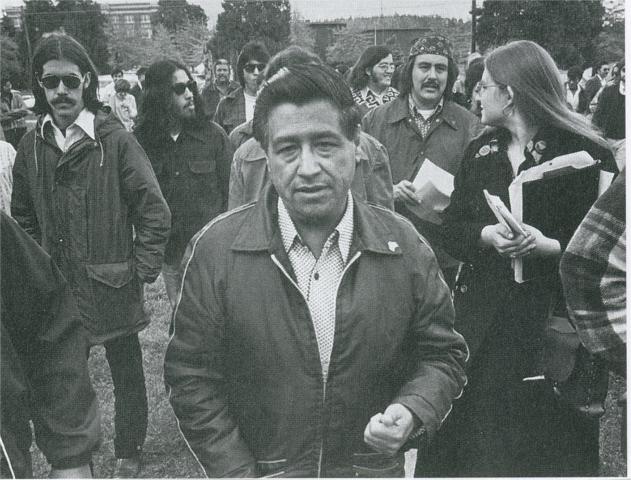Cesar Chavez is a heroic figure among the Hispanic community
September 24, 2021
In the late 1930s, when Cesar Chavez’s Mexican American family lost their farm during the Great Depression and started working as migrant workers, Chavez, who was only 11 years old, dropped out of school and labored in the fields full-time.
Seeing his family and other migrant workers endure back-breaking work, Chavez became eager to work for what he called la causa, dedicating his life toward improving struggling farmworkers’ working conditions. His hard work for the Hispanic community makes him a prominent figure that should be applauded during Hispanic Heritage Month.
In 1952, Chavez was recruited and trained by Fred Ross, a community organizer, to be a grassroots organizer at the Community Service Organization, CSO, a California-based Latino civil rights organization
Chavez worked to register new voters and fight racial and economic discrimination, eventually becoming the CSO’s national director. However, after serving 10 years, Chavez realized that his goal couldn’t be achieved at the organization because other members did not support his efforts to form a labor union for the poor and powerless farmworkers.
Motivated by Mahatma Gandhi’s nonviolent resistance in India, Chavez left his organization and used $1,200 in life savings to fund the National Farm Workers Association. It later became the United Farm Workers of America.
“I am convinced that the truest act of courage, the strongest act of manliness, is to sacrifice ourselves for others in a totally non-violent struggle for justice,” Chavez said, according to NPR. “To be a man is to suffer for others. God help us to be men.”
By sacrificing himself through marches and hunger strikes for the farmworkers, Chavez won a contract that promised better working conditions for migrant workers.
In the late 1960s, Chavez organized farmworkers to launch a strike against grape growers because of paltry pay and poor work conditions.
The movement, which lasted for five years, involved boycotting grapes. In 1968, Chavez went on a 25-day hunger strike, proving his commitment to the cause.
When farmworkers successfully reached an agreement with grape growers for better working conditions, the workers ended the strike and boycott.
After, Cesar continued to fight for labor contracts for farmworkers in all agricultural sectors.
One of his greatest achievements is that after Chavez took on a second hunger strike and organized several boycotts, California’s1975 Agricultural Labor Relations Act was passed, which gave farmworkers the right to unionize and negotiate for better wages and working conditions.
Sen. Robert Kennedy, who visited him when the fast ended, called Cesar “one of the heroic figures of our time.”
In 1988, Chavez undertook a 36-day hunger strike to outlaw the use of dangerous pesticides, which failed to bring as much attention as before.
Long after his death, Chavez’s motto “Sí se puede!” remains ingrained in the lives of people around the world.








jake • Sep 20, 2022 at 3:40 pm
whats good
jake